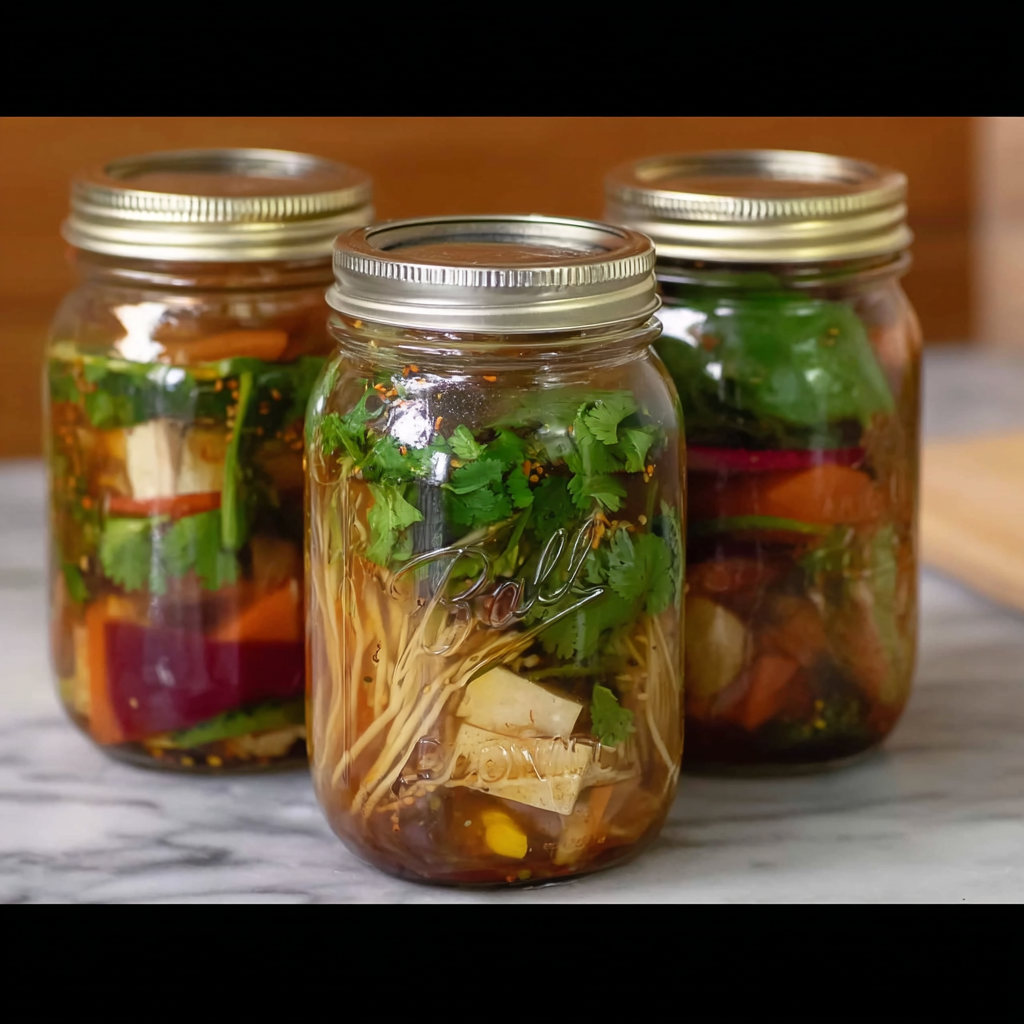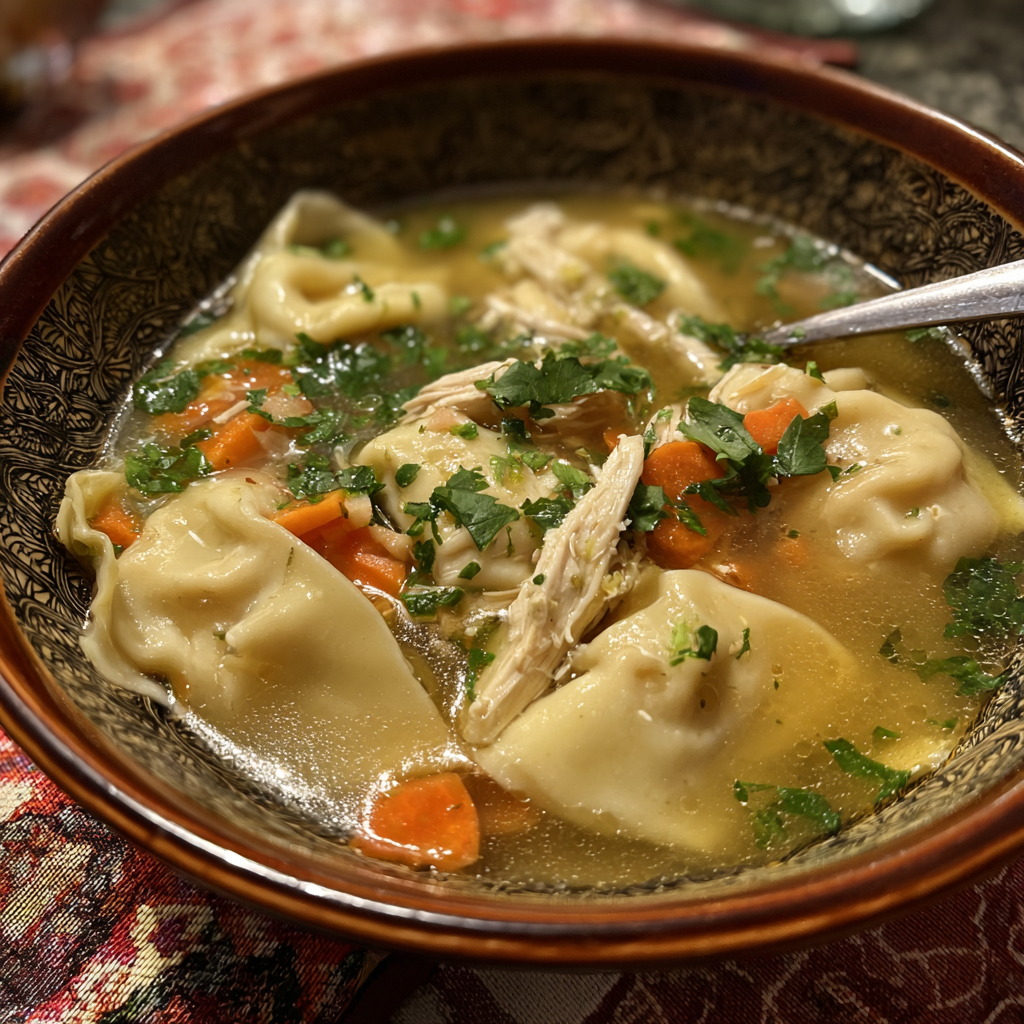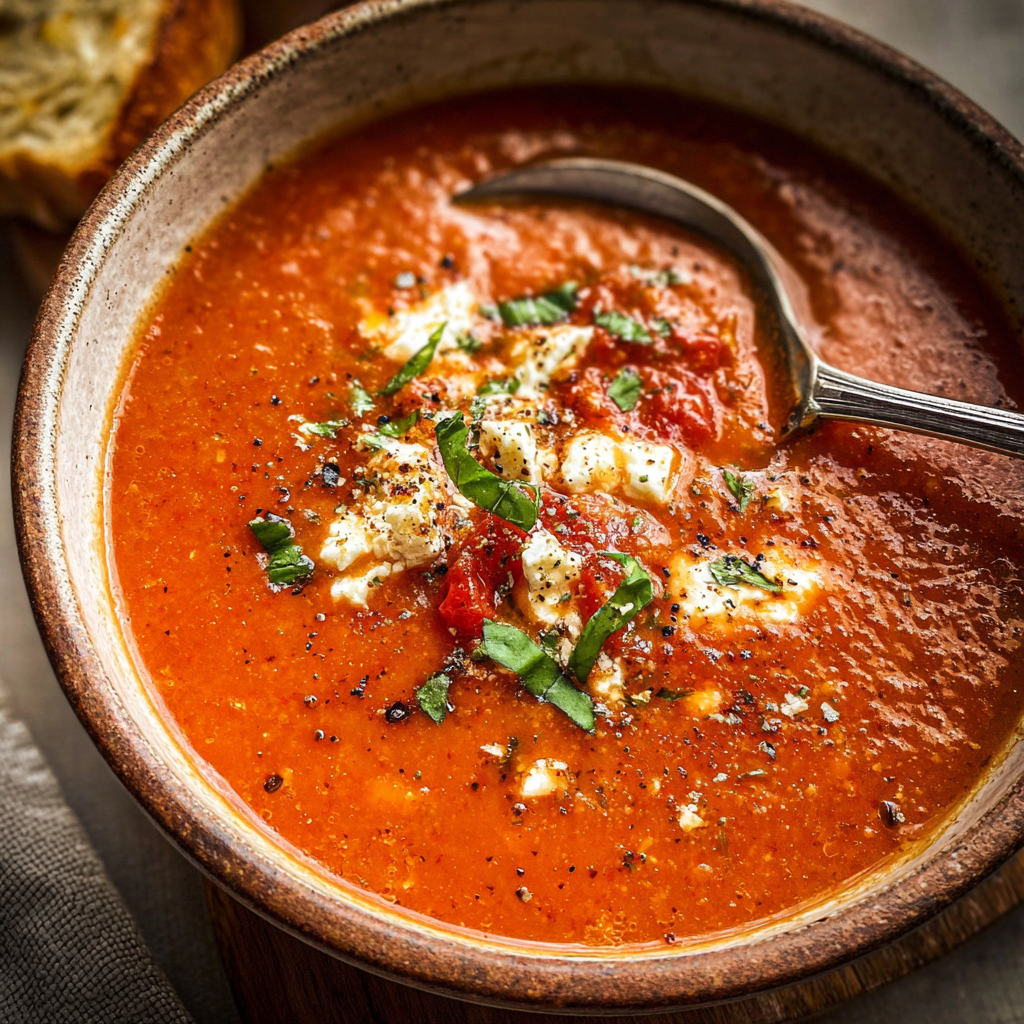Struggling to find time for healthy meals during hectic weekdays? Moreover, what if we told you there’s a way to create satisfying, nutritious soups without any actual cooking? Mason jar soup are revolutionizing meal prep by offering convenience, nutrition, and comfort all in one portable container.
Additionally, this innovative meal prep method transforms simple ingredients into steaming hot soups with just boiling water. Furthermore, these make-ahead meals solve the eternal problem of eating well when time is scarce. In fact, busy professionals, students, and parents everywhere are discovering the magic of this no-cook solution.
Print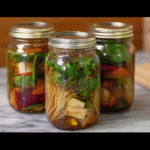
Mason Jar Soup: The Ultimate No-Cook Meal Prep Solution for Busy Lives
- Total Time: 15 minutes (+ soak time)
- Yield: 1 serving 1x
Description
These Mason Jar Soup are a quick and easy meal-prep idea for cozy winter days. Just layer noodles, vegetables, and protein in a jar, then add hot water when ready to eat—no cooking required! Perfect for busy weekdays or a grab-and-go lunch.
Ingredients
- 1 serving rice noodles
- 1 tsp bouillon or miso paste
- 1 tsp garlic, minced
- 1 tbsp low sodium soy sauce
- ¼ cup mushrooms, sliced
- ¼ cup bean sprouts
- ¼ cup red pepper, sliced
- ¼ cup broccoli florets
- ¼ cup shredded cabbage
- ¼ cup shredded carrot
- ½ cup tofu cubes
- Fresh herbs (optional)
- Hot water (when ready to eat)
Instructions
- Layer garlic, bouillon or miso paste, and soy sauce at the bottom of a mason jar.
- Add vegetables one by one, followed by tofu (or protein of choice).
- Place rice noodles on top, folding if needed to fit.
- Top with fresh herbs if desired, then seal with a lid and refrigerate until ready to use.
- When ready to eat, pour boiling hot water into the jar, seal, and shake gently. Let sit 6–7 minutes to cook.
- Open, stir, and enjoy! Add chili powder or chili sauce for extra heat.
Notes
- Use glass mason jars that can withstand hot liquids.
- Customize with chicken, shrimp, or tempeh instead of tofu.
- Great for making 3–4 jars in advance for meal prep.
- Keep jars refrigerated and consume within 3–4 days.
- Prep Time: 15 minutes
- Cook Time: 0 minutes
- Category: undefined
- Method: No-Cook, Mason Jar
- Cuisine: Asian-Inspired
Nutrition
- Serving Size: 1 jar
- Calories: 290 kcal
- Sugar: 6 g
- Sodium: 720 mg
- Fat: 9 g
- Saturated Fat: 1 g
- Unsaturated Fat: 7 g
- Trans Fat: 0 g
- Carbohydrates: 40 g
- Fiber: 6 g
- Protein: 14 g
- Cholesterol: 0 mg
Keywords: mason jar soup, easy meal prep, lazy lunch, no cook soup, winter meal prep, quick vegetarian soup
Why You’ll Love These Mason Jar Soup Recipes
These incredible soup jars offer numerous advantages that make them perfect for modern lifestyles. Moreover, the benefits extend far beyond simple convenience and time-saving.
Time-Saving Benefits:
- Zero cooking required: Just add hot water when ready to eat
- Batch preparation possible: Make multiple jars for the entire week
- Instant meal solution: Ready in under 10 minutes from fridge to table
- No cleanup needed: Eat directly from the jar
Nutritional Advantages:
- Balanced macronutrients: Protein, fiber, and complex carbohydrates included
- Vegetable-packed nutrition: Multiple servings of fresh produce per jar
- Customizable dietary needs: Easily adapt for various eating preferences
- Portion control built-in: Pre-measured ingredients prevent overeating
Budget-Friendly Features:
- Affordable ingredients: Uses simple, inexpensive pantry staples
- Reduces food waste: Precise measurements mean less spoilage
- Restaurant alternative: Satisfying meals at fraction of takeout cost
- Reusable containers: Mason jars last for years with proper care
Convenience Factors:
- Portable meals: Perfect for office, school, or travel
- Long storage life: Keeps fresh in refrigerator for up to five days
- No special equipment: Uses basic kitchen tools everyone owns
- Weather-perfect: Ideal comfort food for cold winter months
Essential Ingredients for Perfect Mason Jar Soup
Creating these amazing no-cook soups requires carefully selected ingredients that work together harmoniously. However, each component serves a specific purpose in building layers of flavor and nutrition.
Base Flavor Ingredients:
- 1 teaspoon bouillon or miso paste: Creates the essential umami foundation
- 1 teaspoon garlic, minced: Adds aromatic depth and immune-boosting benefits
- 1 tablespoon low-sodium soy sauce: Provides saltiness and complex flavor notes
- Hot water: The magical element that brings everything together
Vegetable Components:
- ¼ cup mushrooms, sliced: Earthy flavor and meaty texture
- ¼ cup bean sprouts: Crispy texture and fresh taste
- ¼ cup red pepper, sliced: Sweet crunch and vitamin C boost
- ¼ cup broccoli florets: Nutrient density and satisfying bite
- ¼ cup shredded cabbage: Fiber content and natural sweetness
- ¼ cup shredded carrot: Color, nutrition, and subtle sweetness
Protein and Carbohydrate Elements:
- ½ cup tofu cubes: Plant-based protein and calcium source
- 1 serving rice noodles: Satisfying carbohydrates and authentic texture
- Fresh herbs (optional): Brightness and additional flavor complexity
Step-by-Step Guide to Mason Jar Soup Success
This foolproof layering method ensures perfect results every single time. Additionally, following the correct order prevents soggy ingredients and maintains optimal textures.
Step 1: Foundation Layer Preparation
First, gather all your base ingredients and one clean mason jar. This organization step prevents mistakes and ensures smooth assembly.
Add the minced garlic, bouillon or miso paste, and soy sauce to the bottom of your mason jar. Next, use a spoon to distribute these ingredients evenly across the jar’s bottom. Furthermore, these flavor foundations will dissolve beautifully when hot water is added later.
Press down gently to create a compact base layer. Therefore, this technique ensures even flavor distribution throughout your finished soup.
Step 2: Vegetable Layering Technique
Meanwhile, prepare all vegetables by washing, chopping, and measuring according to the recipe specifications. However, the order of vegetable layering is crucial for optimal results.
Start with the firmest vegetables first, like carrots and broccoli florets. Additionally, these heartier vegetables benefit from longer contact with the hot water. Next, add mushrooms and red pepper slices in the middle layers.
Finally, top with the most delicate vegetables like bean sprouts and shredded cabbage. Moreover, this layering technique ensures each vegetable cooks perfectly without becoming mushy.
Step 3: Protein and Noodle Assembly
Now comes the protein layer, which should sit above the vegetables. Place the tofu cubes evenly throughout this layer for consistent protein distribution.
Add the rice noodles last, folding them gently if needed to fit properly. Furthermore, this top placement prevents the noodles from becoming soggy during storage. Additionally, the noodles will cook perfectly when hot water is added.
Top with fresh herbs if desired, then seal tightly with the mason jar lid. Finally, label with contents and date for easy identification later.
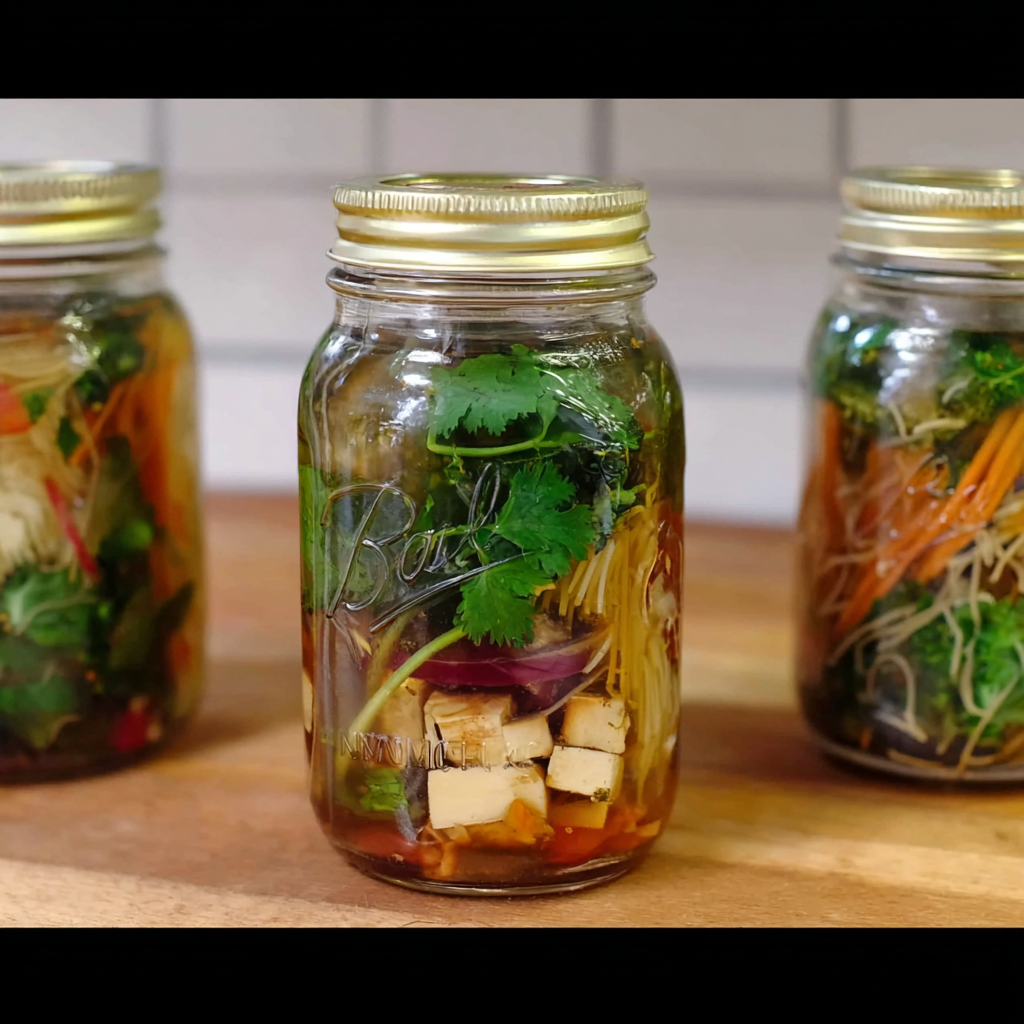
Pro Tips for the Best Mason Jar Soup Results
These expert techniques will elevate your mason jar soups from good to absolutely incredible. Moreover, these tips come from extensive testing and refinement by meal prep enthusiasts.
Layering Success Secrets:
- Keep ingredients dry: Moisture during assembly leads to premature spoilage
- Pack firmly but gently: Prevents ingredient shifting during storage
- Leave headspace: Room for expansion when hot water is added
- Double-check measurements: Consistent results require precise portions
Storage Optimization Tips:
- Use wide-mouth jars: Easier filling and eating experience
- Store upright always: Prevents flavor base from redistributing
- Refrigerate immediately: Maintains freshness and food safety
- Use within five days: Maximum flavor and nutritional quality
Serving Enhancement Ideas:
- Boiling water is essential: Lukewarm water won’t cook ingredients properly
- Shake vigorously first: Distributes flavors evenly throughout
- Let stand 6-7 minutes: Allows proper cooking and flavor melding
- Taste before adding extras: Balance is key to perfect results
Creative Variations of Mason Jar Soups
This basic recipe serves as an excellent foundation for countless flavor variations. Furthermore, experimenting with different combinations keeps meals interesting and prevents boredom.
Asian-Inspired Variations:
Transform your soup with different regional Asian flavors. For instance, add curry paste for Thai influence, or include kimchi for Korean inspiration. Additionally, coconut milk powder creates rich, Southeast Asian-style broths.
Mediterranean-Style Options:
Create Italian-inspired versions using dried herbs like oregano and basil. Moreover, add sun-dried tomatoes and white beans for authentic Mediterranean flavors. Furthermore, nutritional yeast provides cheesy notes without dairy products.
Mexican-Fusion Varieties:
Spice things up with cumin, chili powder, and lime juice in the base. Additionally, black beans and corn create southwestern flair. Moreover, fresh cilantro and jalapeños add authentic Mexican touches.
Protein Variation Ideas:
Although tofu works wonderfully, other protein options expand possibilities significantly. For example, cooked chicken pieces, hard-boiled eggs, or chickpeas all work beautifully. Additionally, these alternatives cater to different dietary preferences and needs.
Common Mistakes to Avoid When Making Mason Jar Soups
Learning from these common pitfalls will save you frustration and guarantee better results. Moreover, understanding what goes wrong helps prevent future meal prep disasters.
Assembly-Related Mistakes:
- Wrong layering order: Results in mushy vegetables and uneven cooking
- Overpacking ingredients: Prevents proper water circulation and cooking
- Using wet vegetables: Causes premature spoilage and soggy textures
- Forgetting headspace: Creates overflow when hot water expands contents
Storage Errors:
- Storing too long: Quality deteriorates after five days maximum
- Inconsistent temperatures: Refrigeration gaps compromise food safety
- Improper sealing: Air exposure leads to faster spoilage
- Laying jars sideways: Redistributes ingredients and affects cooking
Preparation Problems:
- Using insufficient hot water: Ingredients won’t cook properly
- Not shaking thoroughly: Uneven flavor distribution throughout soup
- Rushing the cooking time: Six to seven minutes is essential
- Skipping taste tests: Prevents seasoning adjustments
Nutritional Benefits of Mason Jar Soups
These convenient meals provide exceptional nutritional value while satisfying comfort food cravings. Additionally, understanding the health benefits helps you appreciate this meal prep method even more.
Protein Content:
Each serving delivers substantial plant-based protein from tofu and optional additions. Moreover, complete proteins support muscle maintenance and keep you satisfied longer. Furthermore, plant proteins often come with additional fiber and micronutrients.
Vegetable Density:
Multiple vegetable servings provide essential vitamins, minerals, and antioxidants in every jar. Additionally, the variety ensures a broad spectrum of nutrients. Therefore, these soups help meet daily vegetable intake recommendations effortlessly.
Fiber Benefits:
High fiber content from vegetables and rice noodles supports digestive health. Moreover, fiber helps maintain stable blood sugar levels throughout the day. Furthermore, adequate fiber intake contributes to heart health and weight management.
Hydration Support:
The broth component provides excellent hydration, especially important during winter months. Additionally, warm liquids help maintain body temperature and support immune function. Therefore, these soups work wonderfully when you’re feeling under the weather.
Meal Prep Strategies for Mason Jar Soups
Maximizing efficiency requires strategic planning and smart preparation techniques. However, proper meal prep transforms this convenience food into a true time-saving solution.
Weekly Preparation Schedule:
Dedicate one hour on Sunday to prepare five mason jar soups for the workweek. Additionally, this investment saves countless hours during busy weekdays. Moreover, having meals ready reduces the temptation for unhealthy takeout options.
Ingredient Prep Tips:
Wash, chop, and portion all vegetables during your prep session. Furthermore, storing prepped ingredients in separate containers speeds assembly significantly. Additionally, this technique ensures consistent measurements across multiple jars.
Storage Organization:
Label each jar with contents and preparation date for easy identification. Moreover, store jars in the same refrigerator location for quick access. Furthermore, keeping jars upright prevents ingredient redistribution and maintains optimal layering.
Equipment Essentials for Mason Jar Soup Success
Having the right tools makes the preparation process smooth and enjoyable. Additionally, quality equipment ensures consistent results and long-term success.
Mason Jar Selection:
Wide-mouth mason jars work best for easy filling and eating. Moreover, 16-ounce jars provide perfect single-serving portions for most adults. Furthermore, glass jars are microwave-safe and don’t retain flavors like plastic containers.
Preparation Tools:
Sharp knives and cutting boards are essential for efficient vegetable prep. Additionally, measuring cups and spoons ensure consistent results across batches. Moreover, a funnel helps with neat ingredient layering.
Storage Accessories:
Waterproof labels help track contents and dates effectively. Furthermore, jar carriers make transportation safer and more convenient. Additionally, insulated lunch boxes maintain temperature longer.
Shopping Tips for Mason Jar Soup Ingredients
Smart shopping strategies help you maintain a well-stocked pantry for spontaneous meal prep sessions. Moreover, these tips save money while ensuring ingredient quality.
Pantry Staples to Stock:
Keep miso paste, low-sodium soy sauce, and bouillon cubes as your flavor foundation. Additionally, these ingredients have long shelf lives and multiple uses. Furthermore, having them ready makes meal prep truly convenient.
Fresh Produce Selection:
Choose firm vegetables that will maintain texture after brief cooking. Moreover, buying pre-sliced mushrooms and shredded vegetables saves preparation time. Additionally, frozen vegetables work well and often provide better nutritional value.
Protein Options:
Extra-firm tofu holds its shape better during the cooking process. However, experiment with different protein sources based on dietary preferences. Furthermore, buying protein in bulk and portioning saves money long-term.
Seasonal Adaptations for Mason Jar Soups
Adapting recipes to seasonal ingredients keeps meals fresh and exciting year-round. Moreover, seasonal produce often provides the best flavors and nutritional value.
Winter Warming Additions:
During colder months, add warming spices like ginger and star anise. Additionally, heartier vegetables like winter squash provide extra satisfaction. Furthermore, these additions create more substantial, comforting meals.
Spring Fresh Updates:
Incorporate fresh spring vegetables like asparagus and pea shoots. Moreover, lighter broths work well as temperatures begin warming. Additionally, fresh herbs provide brightness after winter’s heavier flavors.
Summer Light Versions:
Create refreshing variations using cucumber and fresh herbs. Furthermore, these lighter versions work well for warmer weather. However, the hot broth element remains essential for proper cooking.
Fall Comfort Enhancements:
Autumn calls for richer, more complex flavors in your soup base. Additionally, mushroom varieties and leafy greens complement the seasonal mood perfectly. Moreover, these additions provide extra nutrients during cold season.
FAQs About Mason Jar Soups
Q: How long do mason jar soups last in the refrigerator?
A: Properly assembled mason jar soups stay fresh for up to five days when stored correctly. However, consume within three days for optimal taste and texture. Additionally, always check for signs of spoilage before eating.
Q: Can I use different types of noodles in these soup recipes?
A: Absolutely! Ramen noodles, soba noodles, or even pasta work wonderfully. However, cooking times may vary depending on noodle thickness. Furthermore, whole grain options add extra fiber and nutrients.
Q: Do I need to use boiling water, or will hot tap water work?
A: Boiling water is essential for proper cooking and food safety. Additionally, lukewarm water won’t cook the vegetables properly. Moreover, boiling water ensures harmful bacteria are eliminated.
Q: Can I make these soups vegan?
A: Yes! Use vegetable bouillon instead of chicken-based options. Additionally, ensure your miso paste doesn’t contain fish ingredients. Moreover, the tofu already makes these soups naturally plant-based.
Q: What’s the best jar size for mason jar soups?
A: Wide-mouth 16-ounce mason jars work perfectly for single servings. Additionally, the wide opening makes filling and eating much easier. Furthermore, this size provides satisfying portions for most adults.
Q: Can I add cooked proteins like chicken or shrimp?
A: Definitely! Pre-cooked proteins work well in this no-cook method. However, ensure proteins are properly cooked before assembly. Additionally, store these versions for shorter periods for food safety.
Q: How do I prevent vegetables from getting soggy?
A: Proper layering order is crucial for texture success. Additionally, keep ingredients completely dry during assembly. Moreover, don’t overfill jars as this prevents proper water circulation.
Q: Can these soups be frozen for longer storage?
A: Freezing isn’t recommended as it affects vegetable textures significantly. However, you can freeze just the seasoning base in ice cube trays. Furthermore, fresh assembly provides the best results.
Troubleshooting Common Mason Jar Soup Issues
Even simple recipes can sometimes present challenges. However, understanding common problems and solutions ensures consistent success.
Flavor Balance Problems:
If your soup tastes bland, increase the base seasonings gradually. Additionally, taste-testing during assembly helps prevent this issue. Moreover, different bouillon brands vary in intensity significantly.
Texture Issues:
Mushy vegetables usually result from incorrect layering or storage time. Furthermore, using older produce can affect final texture quality. Additionally, overpacking ingredients prevents proper cooking.
Temperature Concerns:
Cold spots in soup indicate insufficient mixing after adding hot water. Therefore, vigorous shaking is essential before the resting period. Additionally, insulated containers help maintain serving temperature longer.
Advanced Mason Jar Soup Techniques
Once you master the basics, these advanced techniques take your soup game to the next level. Moreover, these methods provide even more convenience and flavor options.
Seasoning Paste Preparation:
Create custom seasoning pastes in advance for different flavor profiles. Additionally, these pastes can be portioned and frozen for future use. Furthermore, homemade bases often taste better than commercial options.
Vegetable Preparation Methods:
Blanching certain vegetables briefly before assembly improves texture and color retention. However, this step isn’t necessary for basic recipes. Additionally, roasted vegetables add deeper, more complex flavors.
Protein Marination Techniques:
Marinating tofu or other proteins before assembly enhances flavor significantly. Moreover, this extra step creates restaurant-quality results. Furthermore, marinated ingredients often have better texture after cooking.
Conclusion
These mason jar soups represent the perfect intersection of convenience, nutrition, and comfort food satisfaction. Moreover, this no-cook meal prep method transforms simple ingredients into extraordinary meals with minimal effort. Additionally, the versatility ensures you’ll never run out of exciting flavor combinations.
Furthermore, this technique proves that healthy eating doesn’t require hours in the kitchen. The combination of fresh vegetables, plant-based protein, and flavorful broth creates restaurant-worthy results. Therefore, you can maintain nutritious eating habits even during the busiest periods.

